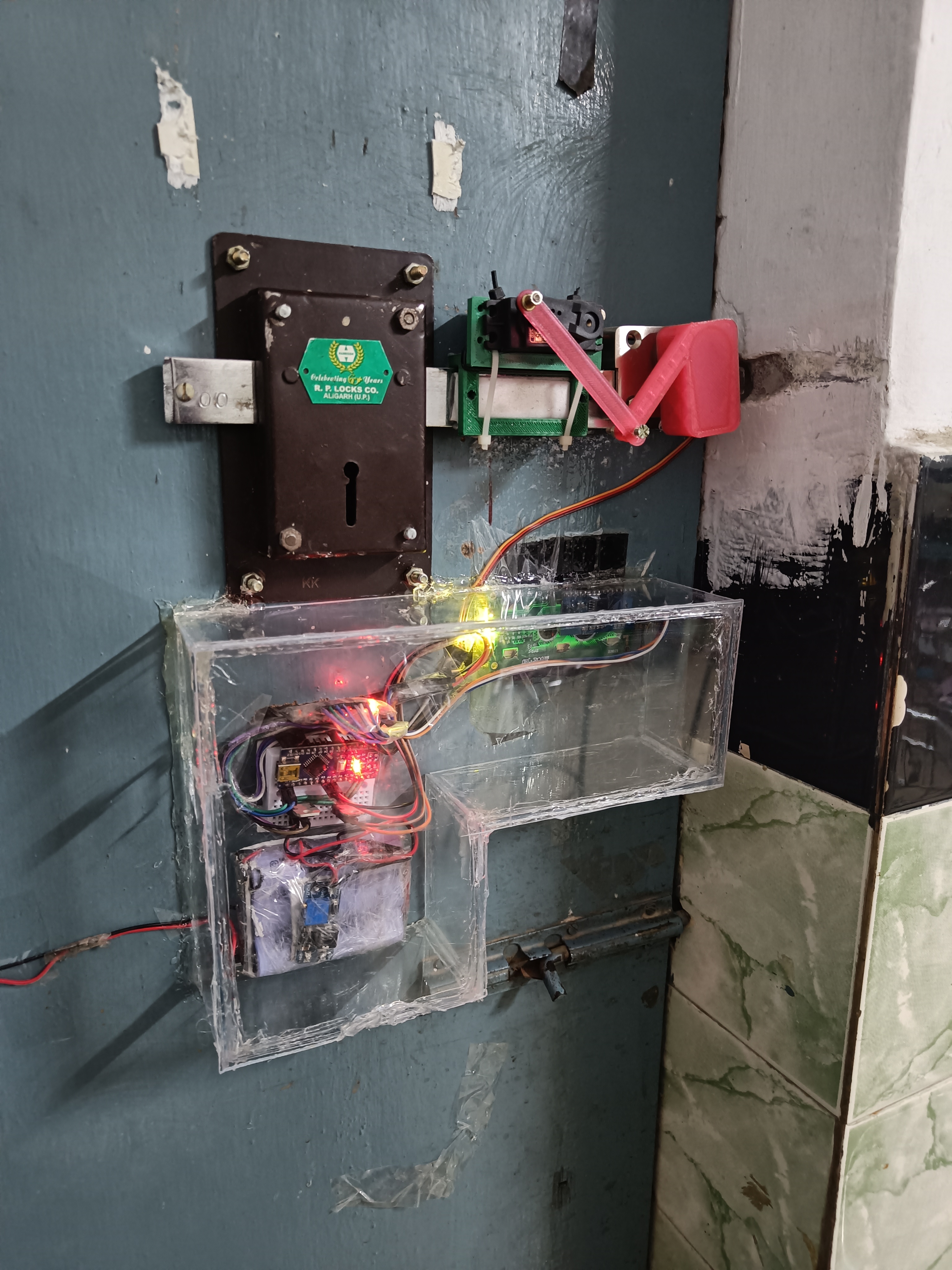

Status : Completed
Tags: arduino servo locking_system rfid

To add a certain degree of automation in our Robotics club premises. Implemented keyless access to the club.
arduino
rfid
servo
locking_system
In the past, doors, and gates were typically secured using a traditional lock and key mechanisms. However, in today's modern era, keyless electronic door locks are becoming increasingly popular in homes, hotels, offices, and other establishments. These types of door locks use various access control systems to allow entry.
As part of our project, we have developed an electronic door lock system that uses RFID technology with an Arduino and RC522 RFID Module. To unlock the door, a specific card or key tag is required, which must be presented to the RFID reader. If an incorrect card or key tag is used, the door will not unlock.
We have designed the system with a manual override option in case of any hardware issues or power failures. This allows access to the premises using a traditional key if necessary.
RFID systems are composed of three primary components: an RFID reader, an RFID tag or smart label, and an antenna. The RFID tag includes an integrated circuit (IC) and an antenna, which transmit data to the RFID reader, also known as an interrogator. Each RFID tag is programmed with a unique key, which the reader uses to verify authorization. If the key matches an authorized key, the tag can be assigned a specific function, which is accomplished through changes in the code in Arduino IDE.
Once the Arduino confirms the tag's authorization, it sends a signal to the servo motor. The servo motor is attached to the doorknob in a way that allows it to rotate and open or close the door according to the circumstances. This process ensures that only authorized individuals with matching keys can access the designated area.
If we need to manually override an RFID door lock system with a key, we can typically do so by locating the keyhole on the door lock, inserting the key into the keyhole, and turning it to unlock the door and this will allow you to open the door manually.
It's important to note that manual override of an RFID door lock should only be used in emergency situations or when the electronic system fails. Regular use of the key override can compromise the security of the lock and should be avoided.
A : Door lock for manual override. it's a retractable system, when key is applied the whole servo+door lock system will be retracted.
B : Servo Motor
C : 3-D printed module which connects the servo motor with the handle of the door lock.
Resources:-
Arduino:
Servo Motor:
RFID:
LCD with I2C Module:
Communication:
|
Name |
Branch |
Reg. no. |
|
Deepak Kumar Singh |
ECE |
20215141 |
|
Vinay Kumar |
ECE |
20215029 |
|
Shobhit Singh |
ME |
20213041 |
|
Harsh Vardhan Raghuvanshi |
ME |
20213009 |